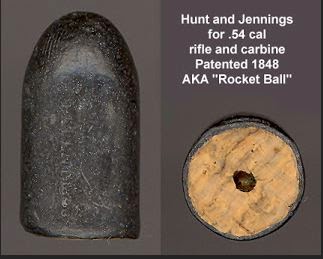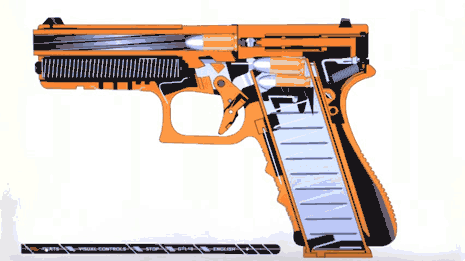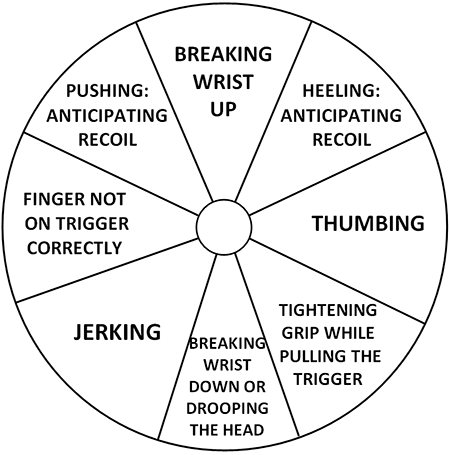In our
last post about
Queen Anne pistols, we mentioned that they were carried by some pirates, notably the famous pirate captain, Edward Teach, better known to the world as "Blackbeard". In today's post, we will study the world of the pirates and the weapons they carried.
First, pirates have been around practically since man learned to build boats. Pirates have been mentioned in ancient Babylonian and Egyptian texts dating back to 1400 BC. The Greeks and Romans battled pirates in the Mediterranean sea. In fact, the word "pirate" is from the Greek word,
pieraomai which means "attempt" (i.e. "attempt to rob for personal gain"), which morphed to the Greek word
pierates which means "bandit" or "brigand", from which we get the Latin word
pirata, from which we get the English word "pirate". In the middle ages, the Vikings roamed the northern seas, but also sailed as far south as North Africa and Italy and sailed up rivers all the way up to the Black sea. The South China sea and the area between Malaysia and the Indonesian islands have had incidents of piracy since about 900 AD. In modern times, we have pirates off the coast of Somalia and in the strait of Malacca.
However, we will concentrate mainly on the weapons used by pirates during the so-called "Golden Age of Piracy", which happened around 1650-1730 AD. This was around the time that various European powers were competing with each other to build colonies and trade routes around the world. During this time, several notorious pirates were based off the Caribbean islands, but there were others who sailed around the coast of Africa and even as far as India. In fact, the biggest robbery ever made during the Golden Age of Piracy was by English pirate Henry Every (also called Henry Avery or Long Ben Every),
who captured a couple of the Indian Mughal emperor Aurangzeb's ships in the Arabian sea, sailing back from Mecca to India loaded with jewels. With this single act of piracy, Henry Every became the richest pirate captain in the world, but he is not as well known as other pirates such as Blackbeard, Calico Jack Rackham, Bartholomew Roberts (a.k.a Black Bart), Henry Morgan, Captain Kidd etc. We will study the weapons used by pirates living in this era. By the way, not all pirates were English. Many were Dutch, French, Spanish, Portuguese, Danish, Swedish, Irish, Scottish, Welsh, German, American, Italian, Moors, Algerians, Africans, Turks, Arabs, Native Americans, Chinese, Malays etc.
It may come as a surprise to readers to find out that during the Golden Age of Piracy, many pirate ships actually operated more democratically than most countries. Every man on board a pirate ship had an equal vote and the pirate captain was elected by the members of the ship. If the pirate captain didn't perform his duties well, he could be voted out of his position as well. The quartermaster was also voted into power by the crew. One more interesting thing was that the pirate captain only commanded the ship when they were in combat. If they were not in combat, it was the quartermaster and not the captain, that decided where the ship would sail next. Pirate crews were generally promoted based on merit (unlike European navies, where most officers bought their positions). Pirates also came from different countries, races and religions, but they all had an equal right to vote and an equal share of the treasure. At a time where most people worked as slaves or as indentured servants, pirates actually signed work contracts when they joined a pirate ship. The contracts specified how much share of the plunder each man would receive (skilled sailors received more than unskilled men), compensation to be paid in case a man was injured or killed while performing his duties (workman's injury compensation in the 17th century!), how prizes were to be divided, awarding of bonuses for good work, the rules of conduct expected of each man and the penalties that would occur, if a man was to break the rules.
In many Hollywood movies, we see pirates fighting each other with sabers and showing some real fancy sword fighting skills. And while pirate ships are approaching merchant ships, they engage in heavy gun battles with cannons until the pirates can swing over to the other ship on ropes. So, is what we see in Hollywood movies really how pirates fought? The answers are very different.
Some of the laws and rules followed by pirates have been recorded by historians. From the contract signed by pirates who sailed under Bartholomew Roberts, we have the following section:
Article V - Every man shall keep his piece, pistol and cutlass at all times, clean and ready for action.So what does the above sentence mean, particularly the three words in
bold font? It gives us a clue as to what weapons pirates actually used. Notice that the cutlass (a short sword) comes third in the list, while "piece" is listed first. We will see what this means in the next few paragraphs.
First, let's deal with the question of swords. Pirate ships and merchant ships were very crowded at all times, with boxes and ropes all over the deck. Therefore a long sword was usually not very useful in combat aboard a ship, because there was usually no room to swing a long sword properly. Secondly, it takes a long time to train a person to use a sword well and only members of the aristocracy could afford to take sword fighting lessons (i.e. fencing lessons). Only a rich person could afford to buy a high quality long sword anyway. Third, long swords are heavy and can make a man tired much more quickly. Therefore, real pirates usually carried a short sword, such as a cutlass, which was much more suitable for fighting in close quarters. Alternatively, they carried axes or knives, since both were cheaper than swords and could also be used well in crowded spaces. However, none of these bladed weapons were usually their first choice of weapon either.
Now let's talk about cannon on ships. Most pirate ships were relatively small and could therefore carry small cannon only. Pirates would usually try to capture ships with as little damage as possible, so that they could take the captured ship and its supplies for themselves. So when they fired cannon at merchant ships, they usually fired small caliber shot to try and disable the crew, or fired chain shot to try and destroy some of the sails, to slow the ship down. They would also shoot warning shots away from the target, to try to get the merchant ships to surrender quietly. They usually never shot large solid cannon balls directly at ships, because this could cause the ship to sink before they captured it. If possible, pirates preferred to capture ships as undamaged as possible, so that they could use them in their own fleets.
Now let's talk about the word "
piece" that we saw earlier. The word "piece" refers to a "fowling piece" or a "hunting piece", i.e. a musket used for hunting birds and animals. In general, a "piece" in pirate language, could refer to any long arm, whether
musket,
rifle,
arquebus or
blunderbuss. These were usually the first weapon of choice for pirates.
The musket was generally available to the common man during the Golden Age of Piracy era, so it was pretty easy for pirates to get their hands on them. A well trained pirate crew could injure or kill several defenders from longer ranges, so that there would be less resistance by the time they boarded the ship. They would target officers, sailors operating the sails and those near the gun ports. Well aimed musket fire in volleys could inflict maximum damage to their opposition, without sinking their ship, which is why pirates preferred using muskets to cannon.
A typical flintlock musket. Click on the image to enlarge. Public domain image.
These muskets were originally designed to hunt bird and animals and were pretty sturdy, with long heavy barrels. While many of them were originally smoothbore, they were still capable of relatively accurate fire. Pirates would sometimes load them with one larger ball about the size of the barrel bore and two smaller balls about half the bore size. This was done to increase the probability of hitting the target. Successful pirate crews carried multiple muskets for each pirate, up to four or five per pirate, and they would all be loaded and ready to go, as they approached their prey. This allowed the pirates to keep shooting rapidly at their prey as they approached it. They would also work in teams, where one pirate would fire muskets, while the other ones would reload them.
The
musketoon is a shorter barreled version of the musket and were more preferred, because they were easier to handle in confined spaces, such as those found on ships. Some musketoons had flared barrels like the next weapon, the
blunderbuss, although the blunderbuss was generally even shorter.
A Blunderbuss. Note the flared muzzle.
The original term for this weapon was
donderbuss and this name appears to be Dutch. The word "donder" means "thunder" and "buss" means "pipe" in Dutch and German languages. They were generally made with brass or bronze barrels, since these resisted corrosion from seawater better than iron barrels. The flared muzzle allowed the user to quickly pour powder and shot down the barrel and load the weapon easier on a moving platform. Pirates would load blunderbusses with multiple shot pellets, scrap nails, rocks etc., and use them at closer ranges. On a crowded deck, a single shot could disable a group of enemies, so they were used to clear a path so that the pirates could board.
As they boarded their enemy's ship, pirates often carried multiple pistols with them. Many of these were single shot flintlock models and quite a few of them were built with flared barrels like a blunderbuss. to enable quicker reloading.
These pistols often had decorations around the muzzle that looked like a dragon's mouth and hence, these pistols were called "dragons". Military troops that carried such pistols were called "dragoons" and the pistols were then referred to as "dragoon pistols".
There were also general purpose flintlock pistols that many pirates carried, as these were also easily available.
A typical British flintlock pistol designed for naval service. Click on the image to enlarge. Public domain image.
In addition to these, some pirates also carried
Queen Anne pistols, which we saw in the previous post. This is because Queen Anne pistols were designed to hold the ball inside the barrel without any wadding and there was much less risk of the ball or powder falling out of the pistol.
These pistols were used practically at point-blank range. Since they were all single shot models, pirates usually carried several of them, either tied around their necks with short pieces of rope, or tucked into a belt. The butt of the pistol handle was often a heavy brass plate (as the two examples above show), so after the pistol was fired, the user could turn it around and use it as a club.
In some cases, they would carry multi-barrel pistols. Some of these were just pistols with multiple barrels and separate triggers to fire each barrel separately. Other models featured a single trigger and multiple barrels that could be turned into position as needed.
A pistol with two separate barrels, two flintlocks and two triggers. Click on the image to enlarge.
An over under pistol with two barrels, two pans, but a single flintlock and single trigger. Each barrel was rotated into position by hand and then fired.
There were also volley fire weapons that could fire multiple pellets in different directions simultaneously, so as to spread the damage with a single shot. An example of such a pistol is shown below.
A duckfoot pistol. Click on the image to enlarge. Public domain image.
The example shown above is a duckfoot pistol using a flintlock firing mechanism. It is called a "duckfoot" because it resembles the foot of a duck. In general, multi-barrel pistols were less reliable than single barrel pistols and therefore, they were not frequently used.
Finally, there was the pirate short sword, the
cutlass. This was usually the third weapon of choice and pirates usually didn't use them unless they really needed to. Forget the long drawn out sword battles shown in Hollywood movies, real pirates kept the fighting time down to a minimum. Real pirates would carry a cutlass with one hand and a pistol with the other. The cutlass would be used to block the opponents sword, while the pirate's other hand would fire the pistol at point-blank range. Sometimes, the pirate would use a combination weapon that
combined a cutlass and pistol together.
A combination of cutlass and pistol. Click on the image to enlarge.
This allowed the pirate to both shoot and cut with a single arm, while the other arm could carry another pistol or a grenade or some such object.
Besides these three weapons, pirates often carried axes, knives, grenades, stink pots etc. However, most pirates preferred using (in order of preference): long guns (such as muskets, rifles and arquebuses), close range powerful shotgun type weapons (musketoons, blunderbusses), pistols and finally swords, axes and knives. Therefore, the Hollywood myth of pirates preferring to use swords and fighting long duels on decks with swords is completely false. They preferred using firearms to bladed weapons.
Now, let us look at a curious line in the contracts signed by pirates that sailed with the pirate captains Edward Low and George Lowther around 1720 AD.
Article VIII - He that sees a sail first, shall have the best Pistol or Small Arm aboard of her.As you can see, the contract clearly states that the first pirate to see the sail of a merchant ship, would be rewarded with the best firearm found on the captured ship, not the best sword. Therefore, they clearly valued firearms more than swords.



















































